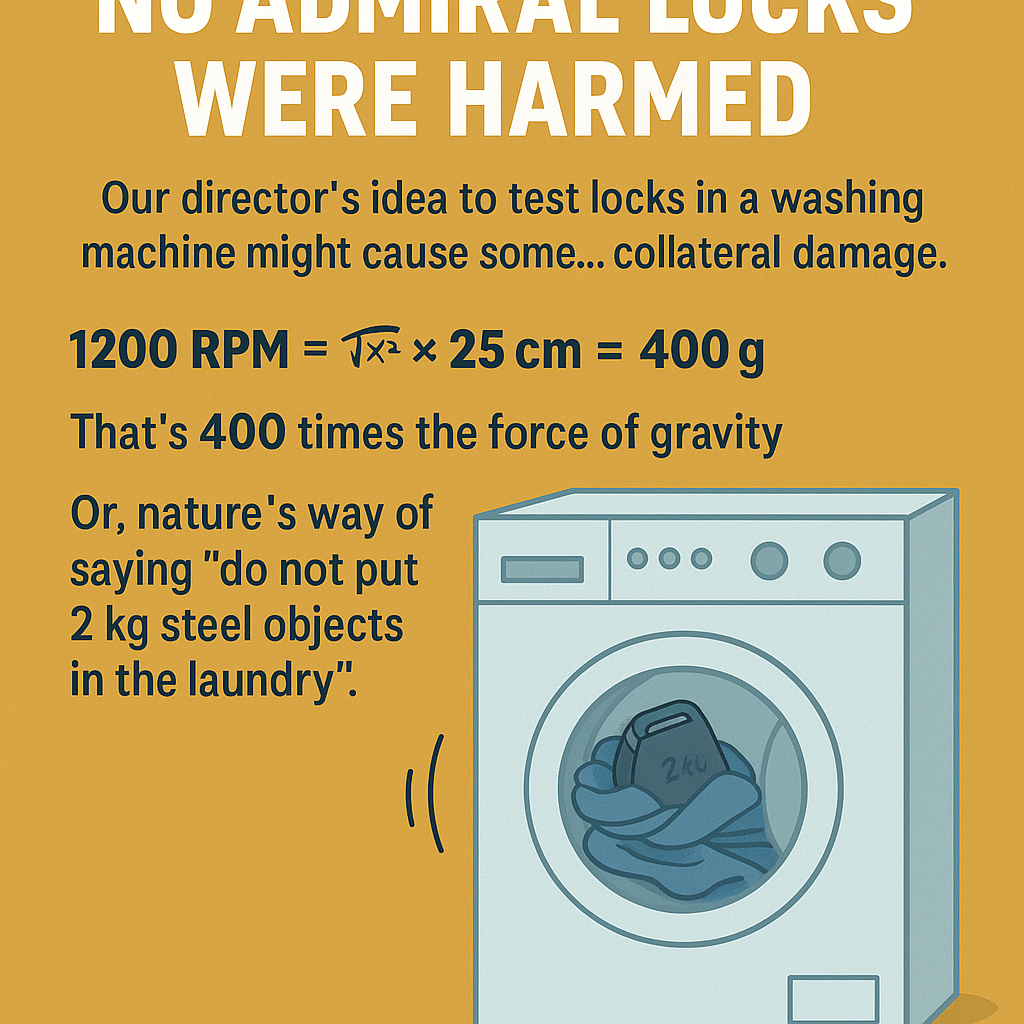The Vibration Test That Nearly Destroyed a Washing Machine (and Our Startup)

Let’s get something out of the way up front: yes, we believe in rigorous fault analysis. No, that doesn’t mean we recommend throwing high-value hardware into household appliances. (Though someone did suggest it.)
When we talked about MTBF testing in our last article, we covered wear and tear over thousands of cycles. But there’s a second villain in the reliability story: vibration. It’s how your trailer tries to shake its components apart — mile after mile, bolt after bolt.
Big companies, with budgets the size of our hopes and dreams, just instrument a real trailer and drive it over custom test routes. They call it real-world testing. We call it… financially ambitious.
So what’s a scrappy startup to do?
The Washing Machine Incident
Our director once half-seriously proposed wrapping a prototype Admiral Lock unit in towels and chucking it into a washing machine set to “Tsunami Spin” mode. It wasn’t our best idea. It was our most dangerous.
Why? Because physics. That’s why.
Let’s do the math (don’t worry, it’s light — we promise).
The Admiral Lock weighs 2kg. Let’s imagine the drum radius is 25 cm and spinning at 1200 RPM. That’s about 125 rad/s.
The g-force at the edge?
a = rω² = 0.25 * (125)² = 3906 m/s²
Which is nearly 400 g. Four. Hundred. G. That’s not vibration — that’s a weapon. A heavy person falling onto an office chair might spike 1–2 g.
At 400 g, your Admiral Lock would hit the washing machine drum with 200 times the force of your butt hitting a chair. And if that drum comes apart, your landlord’s going to want answers.
So yeah, we didn’t do that.
The MIL-STD-810 Way
Instead, we based our approach on MIL-STD-810H, a standard used by the U.S. military to simulate the environmental stresses equipment will endure. Vibration testing under this standard helps you understand how a product responds to real-world abuse — in all three axes.
We matched our vibration profile to a conservative version of the MIL profile for cargo truck transport. Why conservative? Because our insurance doesn’t cover “launched through the ceiling at Mach 2.”
Our vibration table runs in X, Y, and Z axes, simulating the compound motion that occurs when a trailer hits potholes, rumbles across train tracks, or spends three hours in the Bronx.
Estimating Real-World Motion
We couldn’t afford to instrument every route, but we could estimate typical frequency ranges and amplitudes from public data and transport studies. We then tuned our profile to emphasize:
- Frequencies between 10–500 Hz
- Varying power spectral density (PSD) levels
- Axis coupling, because real-world vibration is chaotic, not polite
So… Why Bother?
Because failures don’t just come from wear — they come from shaking, rattling, and the occasional driver who thinks speed bumps are a suggestion.
Good testing means fewer surprises. And no washing machines were harmed in the process.
Want to know more about how we design for survivability? We’ll show you how we make this stuff (almost) indestructible.
Visit level5fleet.com or bring your own towels — just not for spin cycle testing.
The Future of Tractor-Trailer Security